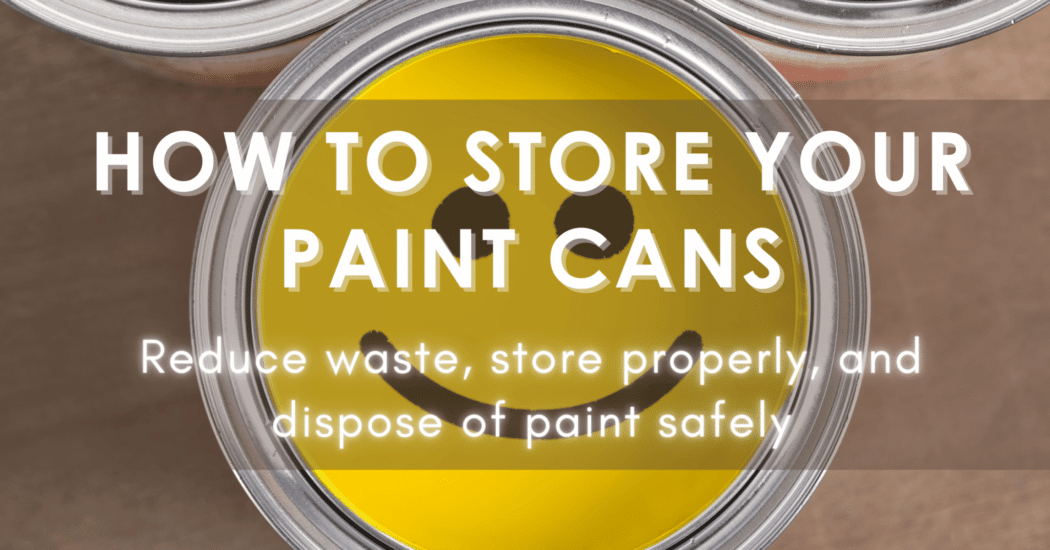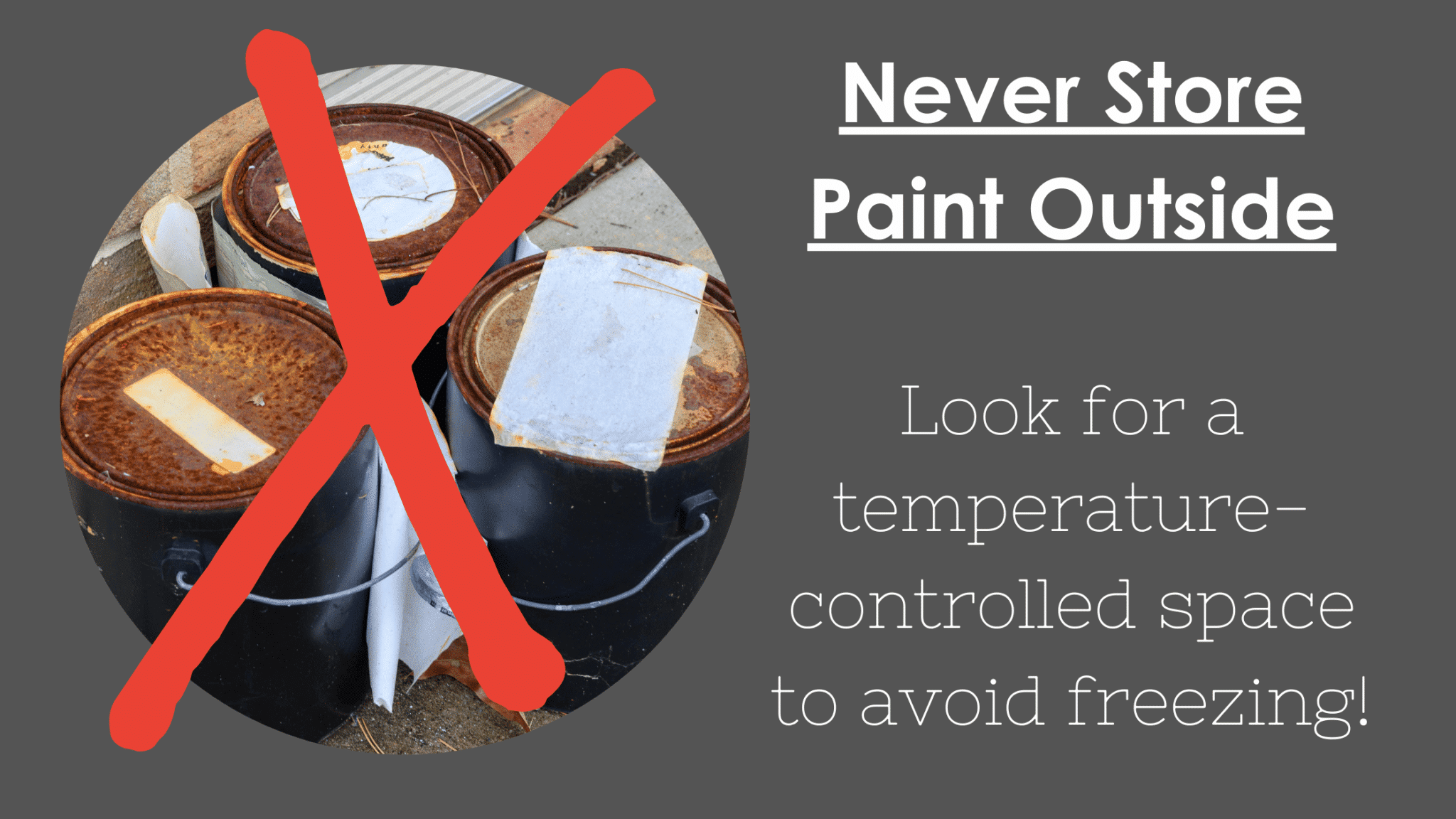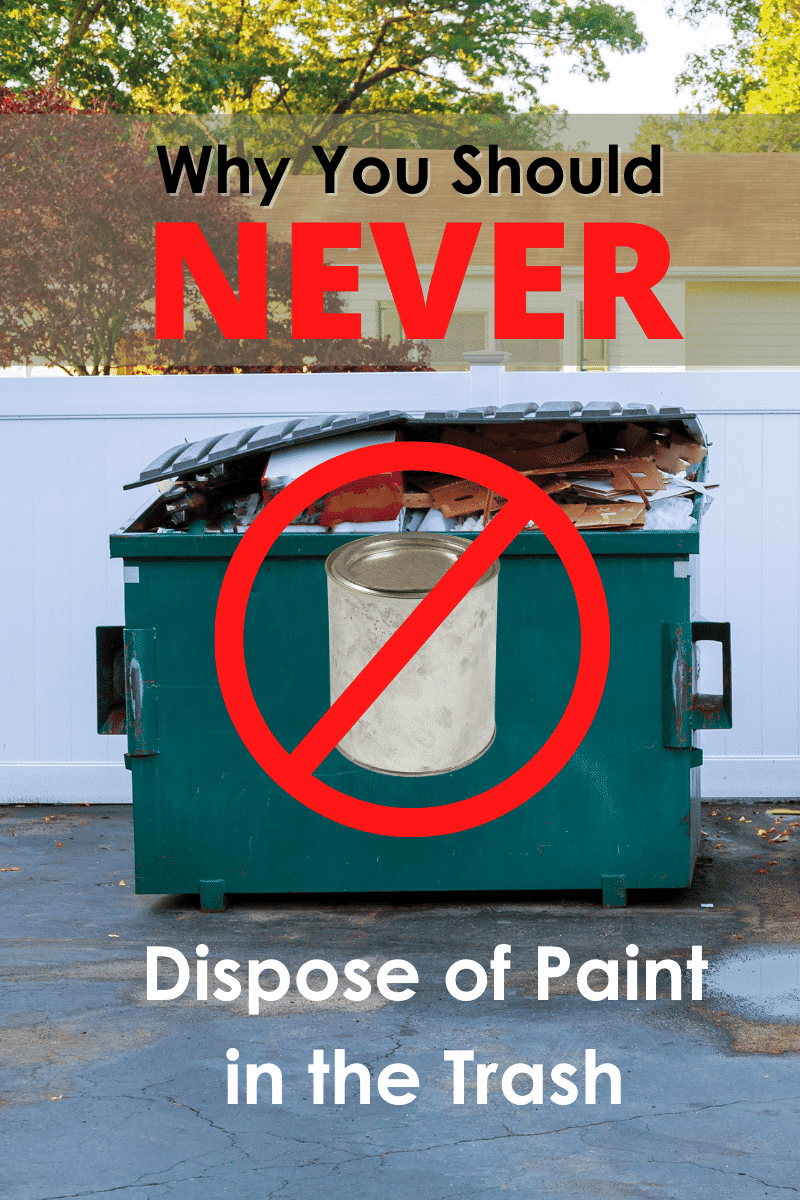
Call Us Today!

Call Us Today!

You’ve finally finished your painting project but how do you store the paint leftover? Whether there is a little or a lot of paint, storing paint properly is important. Follow these steps to preserve your leftover paint safely.
 Store paint properly for use in the future
Store paint properly for use in the future
If you’ve got stored paint lying around you might be wondering if it’s gone bad. The short answer is, yes. If you don’t store your paint properly then it may not be usable down the road. This can be a hassle when you need to take care of touch-ups. Paint can usually last up to ten years when stored properly. If your paint has gone bad it’s usually because of a bad seal or improper storage. Storing paint in a non-temperature-controlled area can quickly lead to problems.
Before using any leftover paint, you’ll want to check and make sure it’s still good to use. If you open the lid and your paint has a strange smell then it may have gone bad. If you see a lot of lumps present after stirring then that paint will also need to be disposed of. Paint should be creamy and smooth so if you’re seeing those lumps throughout then you’ll need to purchase new paint.
 Never store paint outside or in areas that are not temperature controlled.
Never store paint outside or in areas that are not temperature controlled.
To avoid wasting any leftover paint make sure there’s a good seal on your paint cans before storing the paint. Use a mallet to gently hammer around the edges of the lid and make sure there are no gaps. This is also a great time to label your cans. Try labeling your paint cans with the color name and corresponding room or area for easy access. Paint tends to drip and get on the sides of the paint can so we recommend writing your labels on the lid whenever possible.
The next, and most important step, is to find the best location for your paint cans. Areas that are not temperature controlled are not ideal for storing paint. Avoid spaces like unheated garages, sheds, under-decks, etc. Don’t store paint cans directly on a concrete floor because they tend to stay at lower temperatures. These lower temperatures can cause issues with the paint over time. The best places to store paint are temperature-controlled areas. So, look for areas like a closet, a finished basement, or a heated garage to avoid any freezing.
 Don’t throw paint in the trash.
Don’t throw paint in the trash.
If you’re not too keen on storing your leftover paint make sure you dispose of it properly. Before you dispose of any paint make a note of the color and area it was used. This will help you when it comes time to touch up, repaint, or sell your home. Once you’re ready to dispose of your paint you have a couple of options.
Storing leftover paint is simple and easy when you know the dos and don’ts. Remember to store your paint in a temperature-controlled area with a good seal. Make sure to label your cans and when it comes time to throw paint out use a legitimate paint recycling facility. For more information and painting, tips check out Kind Home Solutions‘ How to Prepare for Interior Painting and What’s The House Painting Process, or contact us today for a free estimate!